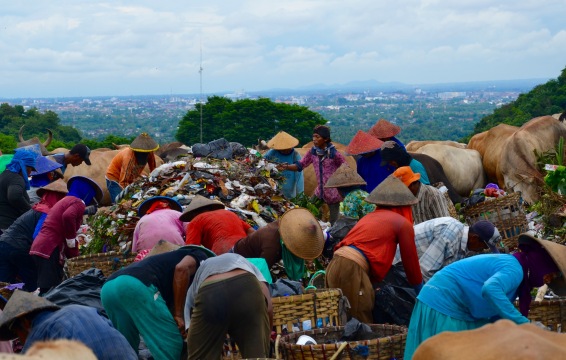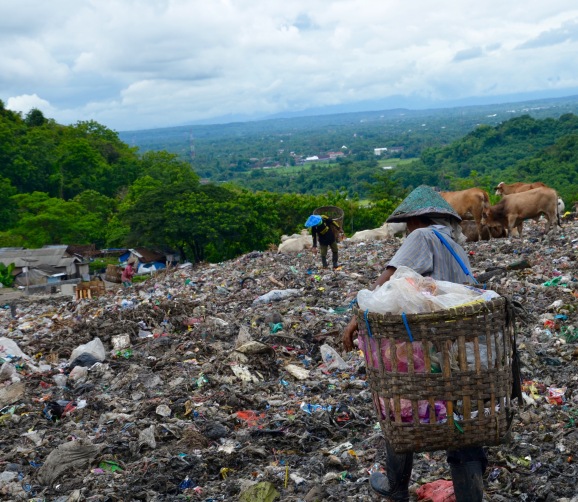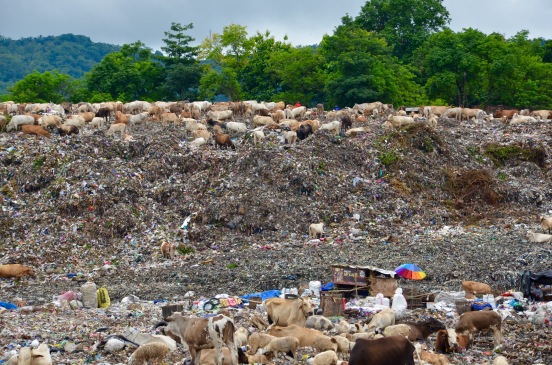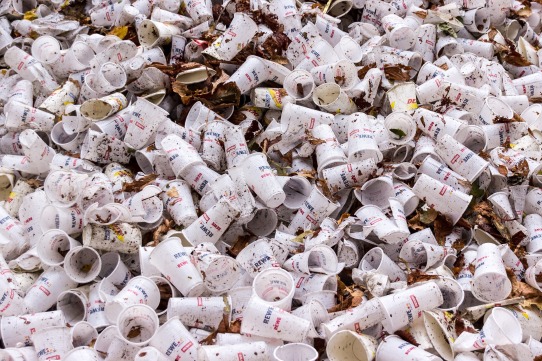In 2015 the Ministry of Environment and Forestry almost declared a state of emergency because of the waste problem. Indonesia is the second biggest contributor to plastic waste in the oceans worldwide. Last month, at a UN environment meeting in Bali Indonesia promised to reduce its waste in the oceans by 70% by 2025. It is a huge task!
People in Indonesia produce an average of 0.7 kilograms of waste per day. This means that 64 million tons per year are mostly dumped into landfills. These dumpsites are not in a good state and are struggling to cope with the ever-increasing waste as the population grows and people consume more and more.

An ever growing mountain of waste
The dumpsite „TPST Piyungan„ in Imogiri is not known to many people. However, about 5000 people try to make a living here by picking up what they can sell (plastic, paper, glass). 433,609,377kg of waste were dumped here in 2016.
The neighbouring villages complain about the smell and the flies. There are literally millions of them that cover everything. When I first enter the heart of the dumpsite, where trucks unload waste from all over Yogya, I have to fight not to vomit because of the smell. Everyone around invested in Wellington boots. What a good idea! You never know what you will step into!

To get a closer picture of what happens here, I come closer to the people that gather around every truck that is being unloaded. They mostly pick up plastic. One woman finds a blouse and tries it on. A man finds a plastic glove that had air blown into it and was tied with a knot, so it looks like a hand. He waves at me and laughs. Actually this is not funny at all as he picked it out of a bag of hazardous hospital waste. There are needles and used tissues. I don’t even want to think about what kind of diseases could be transmitted by touching this.

Most of the pemulung (garbage pickers) don’t wear gloves or any other protection. A city council trainee who works here tells me that the government provides free health services every 3 months.
„I am most afraid of broken glass that hides somewhere and cuts open my hands and arms when I look for plastic“, sighs a lady.
1000 cows „graze“ here permanently to reduce the organic waste. A cow pushes me further into the mountain of garbage. Trucks come and go; twice I have to jump out of their way at the last second. A calf is not as lucky. It gets hit by a truck. Two women carry it away in a wheelbarrow. People keep on picking.

The trucks are weighed when they enter the dumpsite. They pay monthly, depending on how heavy their load is. This is financed by the fees that households pay for the service of getting their waste picked up. As a family of four, we pay 30,000 Rp a month. Not everyone can afford that. Therefore, people still burn their waste. There is still a long way to go, but some small progress is being made.
We will report about that in our next blog, so stay tuned!



